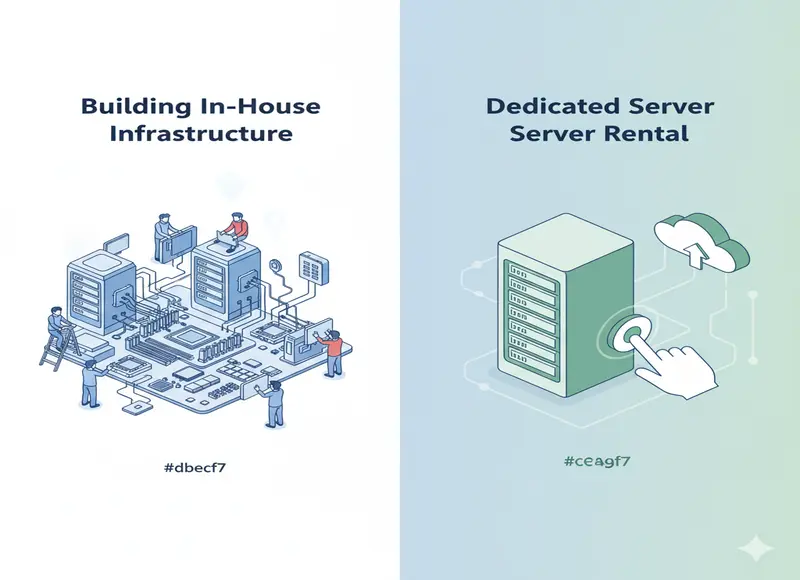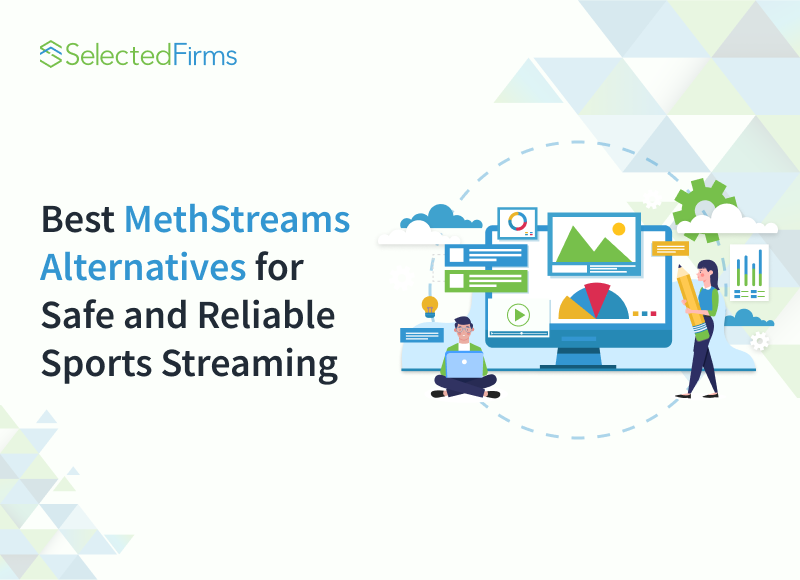Table of Contents
Should you build your own servers or rent dedicated ones? This guide helps DevOps teams, SaaS founders, and digital agencies weigh cost, control, and uptime to find the smarter path to scalable infrastructure.

Every technical leader eventually faces the same fork in the road: keep buying and running your own servers, or switch to renting enterprise hardware from a specialist provider. On paper, both paths can deliver similar performance. In reality, they diverge on cost visibility, operational risk, and the time your team spends fighting fires instead of shipping features.
For many teams with real uptime targets and limited ops bandwidth, dedicated server rental strikes the right balance: single-tenant performance, predictable billing, and fast upgrades—without the logistics of owning hardware.
Comparing Dedicated Rental and In-House Infrastructure
- Understanding the Trade-Off
It is not a straightforward decision to choose between dedicated Server rental or owning them. Each of the two options has significant benefits, which are determined by the priority of the business.
Running your own servers can be a long-term savings option if hardware control is your top priority and the workload is steady. Renting dedicated servers can be a better option for you if flexibility, predictable costs, and faster scaling are your priorities.
One must go deeper than just the performance specs and think about the factors that really assist your team in their work with no interruptions. Once you have done that, it is much easier to review the trade-offs between the two models.
- How the Two Models Differ in Practice
Owning infrastructure means you handle everything—from buying the hardware and installing it, to monitoring, replacing parts, and managing uptime. It gives full control, but also full responsibility.
Dedicated server rental, on the other hand, gives you exclusive access to enterprise-grade hardware hosted by a provider. You still get root access and custom configurations, but the provider handles maintenance, hardware swaps, and data center operations.
In simple terms, you focus on running your workloads while they handle the hardware side. That difference in ownership and setup speed becomes most visible when it’s time to deploy new capacity or react to shifting project needs.
1. Time-to-Value vs. Procurement Cycles
Building in-house starts with procurement: selecting SKUs, negotiating, handling delivery, burn-in, and rack/stack work. Even with a tight supply chain, this can stretch weeks. Rental converts that into hours or a few days. When launch windows matter—or when an unexpected customer deal doubles your capacity needs—faster provisioning wins.
Choose rental if: your roadmap changes quickly, you run client projects with hard deadlines, or you need burst capacity without waiting on supply chains.
2. Cash Flow and TCO Reality
Owning hardware front-loads cost (CAPEX) and introduces depreciation and spares management. Rental is OPEX: a clear monthly line item with component failures handled by the provider.
Over a long, steady 3–5-year cycle, in-house can look cheaper. But if specs evolve (more RAM/NVMe/CPU), or your footprint shifts by region, replacement and shipping costs erode that advantage.
Choose rental if: Cash predictability and the ability to right-size month-to-month are more valuable than squeezing theoretical savings over multi-year horizons.
3. Control That Actually Matters
With in-house, you own BIOS settings, NICs, RAID cards—the works. That level of control is essential if you rely on niche accelerators or have strict firmware provenance requirements. Most application teams, however, need OS-level control plus reliable performance, not carte blanche over the motherboard.
Choose rental if: root access, custom OS images, and predictable resource isolation are sufficient—and you’d rather not manage spares, RMAs, or late-night on-site visits.
4. Performance Consistency Under Load
Peak traffic exposes the gaps: noisy neighbors, throttled CPUs, and storage jitter. Both models can deliver excellent results if you’re on enterprise hardware (Dell/Supermicro/HPE), NVMe storage, ECC RAM, multi-gigabit links, and Tier III/IV facilities.
The practical difference is the time to recover when something breaks. With in-house, your SLA is only as good as your on-site response. With rental, replacements, and troubleshooting baked into the service.
Choose rental if: your SLOs prioritize quick recovery and you don’t want your engineers acting as midnight field technicians.
5. Security, Compliance, and Audit Trails
In highly regulated environments, owning hardware can simplify certain audits. That said, reputable rental providers can document data-center certifications (e.g., Tier III/IV), network protections (DDoS layers), and clear SLA/incident processes. The deciding factor is often evidence: precise procedures, retention policies, and access controls—regardless of who owns the chassis.
Choose rental if: audited processes, transparent SLAs, and 24/7 response meet your compliance needs without forcing you to run a hardware program.
6. Geographic Reach Without the Logistics
Expanding to a new region in-house means shipping gear, arranging cross-connects, and establishing on-site support. With rental, you request the same or a slightly updated SKU in another data center and keep moving. That standardization helps agencies and product companies maintain consistent performance profiles across markets.
Choose rental if: you plan to open new regions quickly and want standardized builds without international logistics.
Choosing What Fits Your Roadmap
There’s no single answer that fits every business. The right infrastructure choice depends on how you balance control, speed, and operational focus.
If your workloads are stable, your ops team is seasoned, and long-term cost optimization matters most, owning hardware can make sense. It gives full control and can pay off over time.
If your business moves fast, runs client projects, or scales across regions, dedicated server rental often delivers more value. It offers reliable performance, uptime, and flexibility without the delays and logistics of hardware ownership.
In general, for teams that prefer managed rental over hardware ownership, providers offer enterprise-grade dedicated servers on Dell and Supermicro hardware in certified Tier III/IV facilities across the U.S. and Europe—backed by 99.99% uptime and 24/7 technical support. It’s a pragmatic path for teams that need OS-level control without running a hardware program.
FAQs
Rental is the option to go for if you require accelerated deployment, fixed monthly costs, and round-the-clock hardware support. It is perfectly suitable if your projects expand very fast or your team is short on time for the management of infrastructure.
Certainly, Trusted suppliers implement Tier III/IV data centers, protection against DDoS attacks, and rigorous entry controls. The level of security is mainly determined by procedures and configurations rather than by the owner of the actual hardware.
Usually, the majority of suppliers are able to offer customized setups in a matter of hours or at the latest in a couple of days. On the other hand, it could take weeks for the whole process of purchasing, transporting, and installing equipment to be done within the company.
Absolutely, you get full root access, custom OS images, and configuration flexibility. It offers the same control as owning hardware but without maintenance or replacement logistics.
If the workloads are stable and upgrade cycles are predictable, purchasing hardware may generate a profit in a range of three to five years. It is also advantageous if your team is capable of performing maintenance without impeding development.
Recent Blogs
12 Best MethStreams Alternatives for Safe and Reliable Sports Streaming in 2026
-
18 Dec 2025
-
12 Min
-
36
Real World Digital Transformation Use Cases in Real Estate, Tech, and Recruiting
-
17 Dec 2025
-
6 Min
-
143








